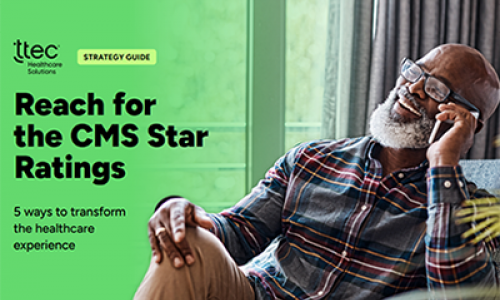The healthcare system can be a labyrinth of choices for patients and their families, especially ones who are dealing with a newly diagnosed condition and are still experiencing shock. Apart from helping members find the right treatment, health insurers need to take it upon themselves to offer proactive advice that can help members address problems before they spiral out of control.
While many health plans have attempted to become sources of information for preventative care, their outreach efforts are often diminished because members become inundated with multiple communications sent across myriad channels. It is up to these health insurers to find a way to stand out and capture members’ attention.
One health insurance provider committed to doing just that. The company wanted to send its members tailored information that would help them better manage their health and, in certain instances, take preventative action to avoid hereditary diseases. In this case, education is the key, since having the right information and action steps for disease prevention can go a long way in helping members prevent and manage conditions, allowing them to live better and healthier lives. The added bonus would be reduced healthcare costs, for patients, their employers, and their health insurance plans.
However, patients are more likely to respond to relevant information, and with healthcare being such a vast topic it’s not easy for organizations to send members information that will strike a chord and propel them to take action. Further, healthcare is a very sensitive subject and members are very protective of their personal information, often feeling uneasy knowing that their insurer, or even worse, their employer, knows about health conditions they are currently battling or others to which they are predisposed.
This particular insurance provider wanted to find a solution that would allow it to send relevant information to members while at the same time respecting their need for privacy. Its business leaders turned to us to help with this ambitious project. The focus of the effort required using data to send event-triggered email marketing and text messages to members. Initially the company ran an internal pilot with about 2,000 staff members before extending the offering to other employees.
The first hurdle that we had to address revolved around data silos. Information was dispersed among 16 different repositories, mostly due to a number of past acquisitions. After bringing everything in one place, we were able to examine member data and create in-depth profiles, using different segmentation criteria, including gender, marital status, and whether or not they had children. The latter is an important data point since parents receive different messaging than members without children. For example, they might receive an update about an immunization program.
Using demographic and behavioral data, we identified members who would benefit from different types of communications that were relevant to them, including educational messaging about at-risk diseases based on their existing conditions. For example, a person with high blood pressure would receive an email highlighting his increased risks of cardiovascular disease. The email would also include advice about lifestyle changes that would help lower blood pressure and consequently reduce the risk of a heart attack or stroke. Apart from targeted emails, the health insurer also sent regular emails about a chosen generic topic to all employees.
During the pilot, we looked closely at how members were engaging with specific communications and made changes to messages which weren’t having the desired impact. We also established business rules to manage the frequency of contact to make sure that members weren’t receiving too many messages.
The pilot proved to be successful, with open rates between 80 and 90 percent. Although the insurance provider recognized that the high open rates could be partly due to members receiving the email communications from their own employer rather than directly from the provider, they also showed that relevant content yields high engagement. The success meant that the program could be extended to one of the insurer’s clients, a national telecommunications provider, where open rates were also substantial at up to 42 percent.
Navigating the healthcare system can be a major challenge for patients, especially during the current transitional period. However, employers and health insurers can go a long way to help their employees and members make the right decisions for their healthcare, by addressing topics that are highly relevant to individuals while at the same time making sure they don’t appear intrusive.
Personalizing Healthcare Messaging for High Open Rates

April 15, 2014
by Barbara Wingle,
Executive Director, Analytics, TTEC Engage
Data Analytics, Customer Acquisition, Digital Transformation Consulting
Executive Director, Analytics, TTEC Engage
Data Analytics, Customer Acquisition, Digital Transformation Consulting





